Error F18 in a Siemens washing machine
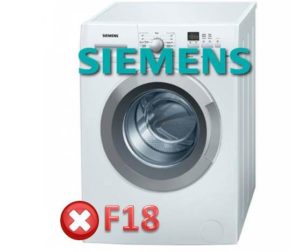 While the machine regularly washes and spins, housewives have no idea that using the display you can not only track the status of the wash and keep track of the time, but also timely record a failure in the system. A problem noticed by the system is immediately displayed on the display as a number-alphabetic combination, decoding which makes it easier to diagnose the source of the problem and eliminate the problem.
While the machine regularly washes and spins, housewives have no idea that using the display you can not only track the status of the wash and keep track of the time, but also timely record a failure in the system. A problem noticed by the system is immediately displayed on the display as a number-alphabetic combination, decoding which makes it easier to diagnose the source of the problem and eliminate the problem.
Thus, error F18 in a Siemens washing machine indicates a non-functioning drain. What led to the malfunction, where to look for the “culprit” and how to repair the “home assistant” on your own in this situation - we will tell you in detail and show you.
Why did the error appear?
No Siemens machine fault code will tell you exactly which element of the system is causing disharmony in a well-coordinated mechanism. The indicated error will only help to detect the “sos” signal from the system in time and narrow the range of possible problems. The F18 doesn't have many of them:
- Clogged pipes, filter, pump impeller, hose or sewer.
- Pump failure.
- Kink, displacement of hoses or pipes.
- Control module malfunction.
The last reason implies a loss of communication between the pressure switch and the corresponding triac. The first is a water level sensor and consists of a small disk on top and a long tube lowered into the tank to measure pressure. It records the amount of water in the machine and transmits the collected information to the control board. If the information does not “reach” due to a faulty triac, the system will not give a command to drain and will not allow the spin cycle to start.
To avoid guessing, we recommend diagnosing it yourself. There is a high probability that error F18 is the result of a blockage that can be easily eliminated without the involvement of professional repairmen. To begin with, we recommend conducting several tests and identifying the “sore spot” of your home assistant.
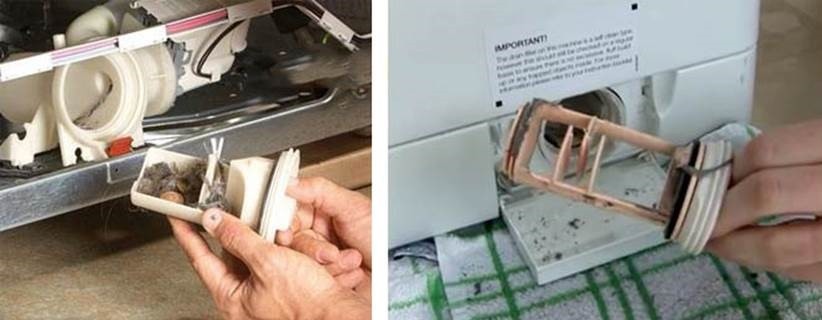
Check for blockages in accessible places
Knowing what to do when code F18 appears, you can check the drain system yourself without outside help. Moreover, the repair does not require special knowledge and experience. The main thing is to act consistently and adhere to the given instructions.
First, let's inspect the water supply components for blockages. We proceed like this:
- Disconnect the washing machine from the power supply.
- We find a drain hatch in the front lower right corner of the body.
- Open it with a flat-head screwdriver so that the two latches holding the door engage.
- Prepare dirty rags and a container to collect water.
- Take the emergency hose located next to the filter, loosen the clamp and drain the water.
Important! If the emergency hose is empty, it means that the drain pipe is clogged and water cannot leave the tank (what should be done in this case is at the end of the section).
- Unscrew the garbage filter.
- We thoroughly clean it of scale and dirt.
- We inspect the pump impeller, and if there is wound hair, we ensure its free rotation.
- Remove the clamps on the drain hose, remove and clean under a strong stream of water.
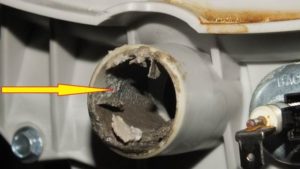 It’s rare, but it happens that garbage accumulates not in the machine itself, but in the public sewer system. It’s easy to check your guess: turn on the spin mode and lower the end of the drain hose into the toilet, sink, bathtub or basin. Freely flowing water removes all suspicion from the equipment.
It’s rare, but it happens that garbage accumulates not in the machine itself, but in the public sewer system. It’s easy to check your guess: turn on the spin mode and lower the end of the drain hose into the toilet, sink, bathtub or basin. Freely flowing water removes all suspicion from the equipment.
Now let's go back to the drain pipe.It connects the pump and the tank, and if there is a lump of garbage in the hose, the water is blocked and cannot escape from the drum. To confirm the assumption, you will have to get to the pump volute through the bottom of the machine.
Most often, Siemens units do not have a bottom panel, so it is enough to tilt the housing back, reach the tube, disconnect it, drain the accumulated liquid and check for blockages. Rinsing under strong water pressure will help eliminate the damage. If there is a pan, first unscrew the holding bolts, not forgetting to carefully unfasten the leakage sensor wire. The latter is provided for an emergency stop of the machine when water gets into the basement compartment to avoid flooding and short circuits.
Let's check the pump thoroughly
If the hoses and pipes do not cause suspicion, we turn our attention to the pump. It may become clogged, burn out or crack. In some cases, an amateur craftsman can carry out repairs with his own hands. But first you need to get to the details.
- We turn off the power to the machine, turn on the water supply tap and disconnect the drain hose from the sewer pipe.
- Open the drain hatch located in the front lower right corner.
- We empty the machine through the emergency drain or garbage filter.
- We provide free access to the unit from all directions.
- We prepare rags and containers for collecting water.
- We take out the powder receptacle by sharply pulling it towards ourselves.
- Turn the washer onto its right side.
- We remove the bottom by prying it up, pulling off the latches and disconnecting the leakage sensor wire.
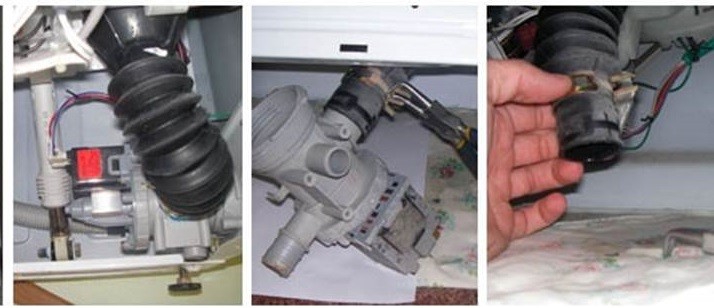
Don’t rush and check the pump’s functionality with a multimeter. Most often, the problem lies not in the electronics, but in the debris present inside the case.Despite a well-thought-out filtration system that allows foreign objects and dirt to settle in the garbage filter, some hair and fur find their way into some spare parts. Therefore, you will need to disassemble the pump and clean it of any debris that impedes its operation. It's easy to do:
- fix the location of the wires on the camera or using markings;
- disconnect the connected wiring;
- loosen the clamps with pliers;
- remove the hose and pipe;
- Hold the pump firmly by the body and turn it half a turn counterclockwise.
We insert a screwdriver into the existing hole at the middle joint and remove the top cover. Now we carefully inspect the internal mechanism, remove scale and dirt, check the integrity of the gaskets and clean the contacts. After this we test with a multimeter. If the pump is working properly, a three-digit number will be displayed on the display, and the appearance of “0” or “1” will indicate the need for a complete replacement.
When the hoses are clean and the pump is running, there is a good chance that the control board is damaged. Independent attempts to correct the situation are fraught with additional breakdowns, so we strongly recommend that you entrust electronics repair to professionals.
Interesting:
Reader comments
- Share your opinion - leave a comment

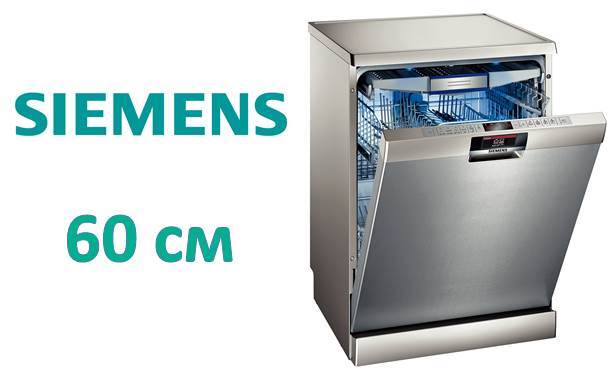

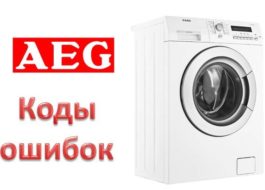
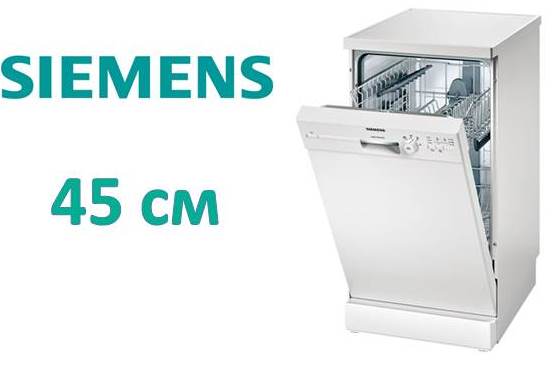
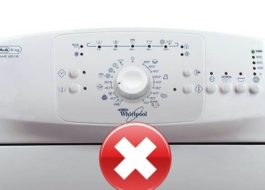
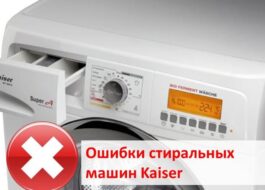














Add a comment